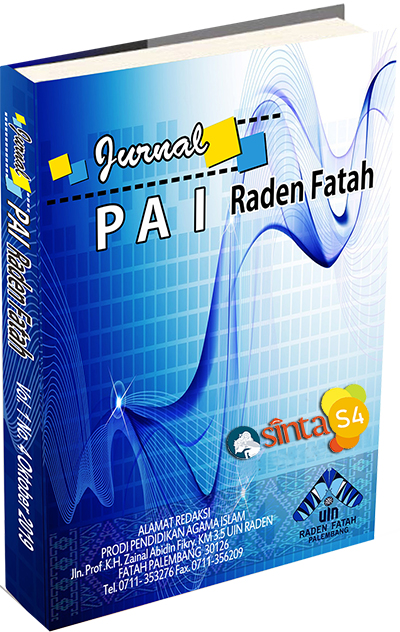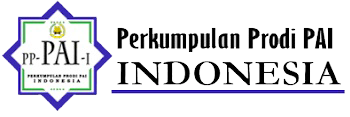The Application of the Gallery Walk Method in Increasing Student Activity in Islamic Education Learning
DOI:
https://doi.org/10.19109/pairf.v7i3.28863Keywords:
Gallery Walk, Learning Activeness, Islamic Religious EducationAbstract
This study was motivated by the low level of student engagement in Islamic Religious Education (PAI) among eighth-grade. Observations and interviews with school personnel revealed that many students tended to be passive during learning activities, mainly due to the use of conventional, teacher-centered methods that did not actively involve students. To address this issue, the researcher implemented the Gallery Walk method as an alternative instructional approach that is more interactive and student-centered. This method encourages students to work in groups, engage in discussions, express ideas, and move around the classroom to observe and reflect on the work of other groups. As a result, students are expected to become more active physically, mentally, and socially during the learning process. The study employed a quantitative approach using a one-group pretest-posttest pre-experimental design. The research subjects were 26 students from class VIII A. The instrument used was a student learning activeness questionnaire administered before and after the implementation of the Gallery Walk method. The results showed an increase in student activeness, with the average pretest score rising from 74.5 to 84.19 in the posttest. A paired sample t-test yielded a significance value of 0.000 (p < 0.05), indicating a significant difference between the pretest and posttest scores. These findings demonstrate that the Gallery Walk method is effective in enhancing student engagement in Islamic Religious Education.
References
Abdullah, Karimuddin, Misbahul Jannah, Ummul Aiman, Suryadin Hasda, Zahara Fadilla, Taqwin, Masita, Ketut Ngurah Ardiawan, and Meilida Eka Sari. Metode Penelitian Kuantitatif. Aceh: Yayasan Penerbit Muhammad Zaini, 2021.
Ali, Mohammad, and Muhammad Ansori. Metodologi Dan Aplikasi Riset Pendidikan. Jakarta: Bumi Aksara, 2014.
Bannister, S, and E Wilden. “The Impact of 1:1 Laptop Computer Programs on Student Achievement: A Meta-Analysis.” Journal of Technology, Learning, and Assessment 12, no. 3 (2013): 5–52.
Dengo, Fitri. “Penerapan Metode Gallery Walk Dalam Meninngkatkan Hasil Belajar Peserta Didik Pada Pembelajaran IPA.” TADBIR: Jurnal Manajemen Pendidikan Islam Vol. 6, no. 1 (2018).
Dodi Irawan, and Anisa Dafa Mutmainah. “Peran Pendidikan Agama Islam Dalam Membentuk Kepribadian Yang Mulia.” Symfonia: Jurnal Pendidikan Agama Islam 2, no. 2 (2022): 97–110. https://doi.org/10.53649/symfonia.v2i2.25.
Fadil, Achmad. “Hubungan Gaya Mengajar Guru Fikih Terhadap Prestasi Belajar Siswa.” Jurnal Intelektualita: Keislaman, Sosial Dan Sains 11, no. 2 (2022): 237–41. https://doi.org/10.19109/intelektualita.v11i2.14668.
Fateqah, Bidjaksana Arief, and Sri Karuniari Nuswardhani. Teori Dan Praktik Metode Penelitian Kuantitatif. Yogyakarta: Anak Hebat Indonesia, 2024.
Fauziyah, Rifa Nur, Asep Dudi Suhardi, and Fitroh Hayati. “Strategi Guru Dalam Menerapkan Pembelajaran Aktif Inovatif Kreatif Efektif Dan Menyenangkan (PAIKEM) Pada Pembelajaran Pendidikan Agama Islam Di SD N Astanaanyar Kota Bandung.” Journal Riset Pendidikan Agama Islam Vol. 1, no. 2 (2021).
Hariandi, Ahmad, and Ayu Cahyani. “Meningkatkan Keaktifan Belajar Siswa Menggunakan Pendekatan Inkuiri Di Sekolah Dasar.” Jurnal Gentala Pendidikan Dasar Vol. 3, no. 2 (2018).
Hmelo-Silver, C E. “Problem-Based Learning: What and How Do Students Learn?” Educational Psychology Review 16, no. 3 (2004): 235–66. https://doi.org/10.1023/B:EDPR.0000034022.16470.f3.
Indayani, Mawar, and Enggal Mursalin. “Peningkatan Motivasi Dan Belajar Siswa Melalui Penerapan Model Pembelajaran Co-Op Co-Op.” Jurnal Biology Science & Education Vol. 11., no. 1 (2022).
Kebritchi, Mansureh, Atsusi Hirumi, and Haiyan Bai. “The Effects of Modern Mathematics Computer Games on Mathematics Achievement and Class Motivation.” Computers & Education 55, no. 2 (2010): 427–43. https://doi.org/10.1016/j.compedu.2010.02.007.
Liyani, Utami, Abu Mansyur, and Nyayu Soraya. “Dampak Penghapusan Kebijakan Program Sekolah Gratis Terhadap Prestasi Belajar Siswa.” Jurnal PAI Raden Fatah 4, no. 3 (2022).
Mansur, Amirullah, and Nurhaedah. “Penerapan Metode Gallery Walk Untuk Meningkatkan Motivasi Belajar Sejarah Peminatan Siswa Kelas XI IPS 4 SMA Negeri 2 Enrekang.” Jurnal Pemikiran Dan Pengembangan Pembelajaran Vol. 5, no. 2 (2023).
Mayer, Richard E. “Computer Games in Education.” Annual Review of Psychology 70 (2019): 531–49. https://doi.org/10.1146/annurev-psych-010418-103744.
Monica, Ririn Eka, Lukman Asha, Asri Karolina, Eka Yanuarti, Maryamah, Mardeli, and Nyayu Soraya. “Penanaman Nilai-Nilai Akhlak Dalam Pembelajaran Pendidikan Agama Islam Menghadapi Era Milenial Di SMA Negeri 2 Rejang Lebong.” TADRIB: Jurnal Pendidikan Agama Islam Vol. 6, no. 2 (2020).
Nuraini, Nuraini, Ali Imran, and Ahmad Syarifuddin. “Penerapan Metode Quantum Tahfiz Dalam Meningkatkan Hafalan Al-Qur’an.” Jurnal PAI Raden Fatah Vol. 4, no. 4 (2022).
Oktalia, Delvia, and Siti Tiara Maulia. “Implementasi Model Pembelajaran Gallery Walk Terhadap Keaktifan Belajar Siswa Pada Mata Pelajaran PPKN.” Jurnal Manajemen, Ekonomi, Hukum, Kewirausahaan, Kesehatan, Pendidikan Dan Informatika (MANEKIN) Vol. 1, no. 04 (2023).
———. “Implementasi Model Pembelajaran Gallery Walk Terhadap Keaktifan Belajar Siwa Pada Mata Pelajaran PPKN.” Jurnal Manajemen, Ekonomi, Hukum, Kewirausahaan, Kesehatan, Pendidikan Dan Informatika (MANEKIN) Vol. 1, no. 04 (2023).
Payon, Feni Farida, Dyka Andrian, and Sasi Mardikarini. “Faktor Yang Mempengaruhi Keaktifan Belajar Peserta Didik Kelas III SD.” Jurnal Ilmiah Kontekstual Vol. 2, no. 02 (2021).
Prihatin, Nyimas Yunierti, Ferianto, and Muhammad Wahyu Ilhami. “Peranan Pembelajaran Pendidikan Agama Islam Dalam Memotivasi Peserta Didik Guna Meningkatkan Aktivitas Ibadah.” Muaddib: Islamic Education Journal Vol. 6, no. 2 (2023).
Prince, M. “Does Active Learning Work? A Review of the Research.” Journal of Engineering Education 93, no. 3 (2004): 223–31. https://doi.org/10.1002/j.2168-9830.2004.tb00809.x.
Richardson, J W, S McLeod, K Flora, N J Sauers, S Kannan, and M Sincar. “Large-Scale 1:1 Computing Initiatives: An Open Access Database.” International Journal of Education and Development Using ICT 9, no. 1 (2013): 4–18.
Ritzhaupt, Albert D, and Florence Martin. “Development and Validation of the Educational Technologist Multimedia Competency Survey.” Educational Technology Research and Development 62, no. 1 (2014): 13–33. https://doi.org/10.1007/s11423-013-9325-2.
Rohmadi, Rohmadi, and Trysha Yulindaputri. “Pengaruh Kompetensi Kepribadian Guru Terhadap Karakter Tanggung Jawab Siswa.” Tsaqafatuna 5, no. 2 (2023): 84–95. https://doi.org/10.54213/tsaqafatuna.v5i2.204.
Rustam, St. Syamsudduha, and Eka Damayanti. “Pengaruh Penerapan Metode Gallery Walk Terhadap Minat Belajar Peserta Didik Biologi.” BIOMA: Jurnal Biologi Dan Pembelajaran Biologi Vol. 5, no. 1 (2019).
Syarnubi Syarnubi. “Hakikat Evaluasi Dalam Pendidikan Islam.” Jurnal PAI Raden Fatah Vol. 5, no. 2 (2023).
Tamim, R M, R M Bernard, E Borokhovski, P C Abrami, and R F Schmid. “What Forty Years of Research Says about the Impact of Technology on Learning: A Second-Order Meta-Analysis and Validation Study.” Review of Educational Research 81, no. 1 (2011): 4–28. https://doi.org/10.3102/0034654310393361.
Wahyuningsih, Tri. “Wawancara Dengan Kepala Sekolah SMP Tri Dharma Palembang,” 2024.
Wu, Wen-Hsiung, Hsin-Chieh Hsiao, Pei-Lung Wu, Chih-Hung Lin, and Shu-Hua Huang. “Investigating the Learning-Theory Foundations of Game-Based Learning: A Meta-Analysis.” Journal of Computer Assisted Learning 28, no. 3 (2012): 265–79. https://doi.org/10.1111/j.1365-2729.2011.00437.x.












.png)


1.png)



